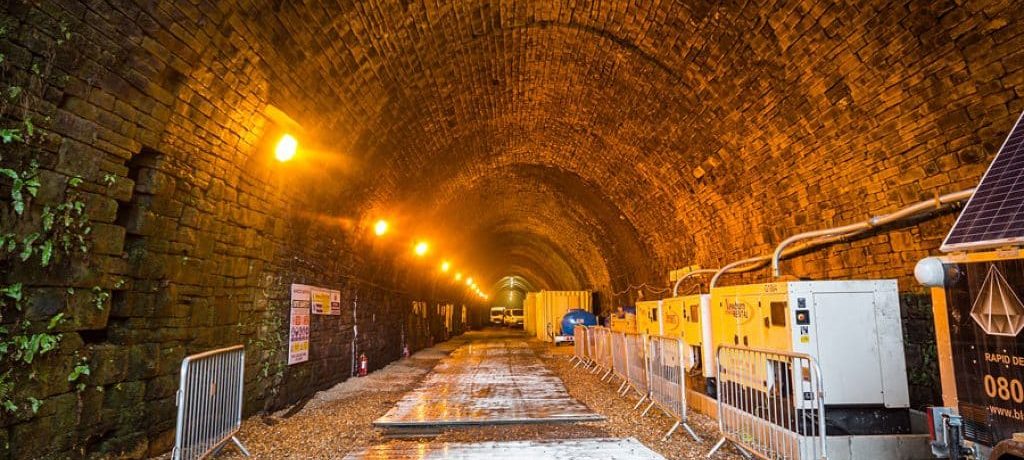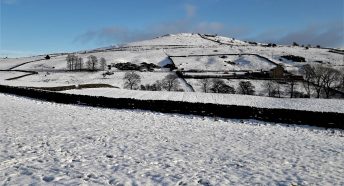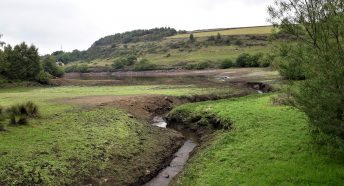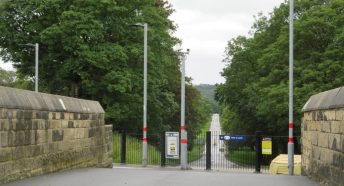The Queensbury Tunnel: A Flagship for Active Travel? by Anne Robinson
The future of the 1.4-mile Queensbury Tunnel on the disused railway line between Halifax and Bradford is up for grabs. Neglected for years, the tunnel is collapsing and subject to flooding. Should it be restored as part of a network of greenways linking Keighley, Bradford and Halifax, or closed? Anne Robinson considers the future of the Queensbury Tunnel Cycle Route.
To its custodian, Highways England, it is a public liability that should be left to crumble underground once the shafts and entrances are filled. To everyone else it is an opportunity to create an exciting trail for walking and cycling that could encourage people out of their cars and attract visitors to the longest tunnel walk in Britain.
Perhaps one can expect nothing else from the nation’s strategic road builders. With goals to make every driver’s journey reliable and swift Highways England relies on increasing road space, a non-virtuous circle which encourages yet more traffic to create yet more congestion.
Not far away from the Queensbury tunnel lies a heavily congested motorway and ‘A’ road network. Although restoring the tunnel may not immediately impact on these traffic-jamming flows, it would be a headline statement about the way travel needs to change now. The climate emergency requires rapid and far reaching transitions that are unprecedented in scale, if carbon emissions are to reach net zero by 2050 or earlier.
However, transport is the one sector that has failed to meet its carbon budgets, with its emissions at the same level in 2016 as they were in 1990 and the majority due to cars. Even with a shift to electric vehicles, car mileage needs to fall by between 20% and 60% in order to meet the carbon target set for 2030.
That requires a big increase in active travel. But the lack of high quality, safe, continuous and accessible routes stops people walking and cycling. The highway environment for those not in a car is deeply unpleasant and intimidating, dangerous even. Safe segregated routes, such as the tunnel network offers, would remove this key barrier and provide for healthier lifestyles.
Sadly, West Yorkshire’s current transport plans pay only lip service to smart travel programmes and behaviour change schemes. They lack a coherent strategic approach and radical investment, meaning carbon emissions are forecast to increase by 28%, not decrease, by 2036.
Restoring the tunnel offers a principled way forward. Local people have understood this and strongly oppose Highway’s England’s plans. Financial considerations show abandonment as costing upwards of £3.4million and restoration of costing between £4million and £35million. However, these costs must be balanced against the wider benefits to health and wellbeing, society and the environment including reduction of carbon emissions, all of which could be substantial – the estimated economic benefits from tourism for the whole greenway network over 30 years are £37.5million.
The will to ‘active travel’ is there but the facilities are not. Providing walkways that are safe and pleasant to use requires a holistic approach to ensure they link residents not only with nature and fresh air, but also to day-to-day destinations with cycle lock-ups and showers. Restoring the Queensbury Tunnel could be a flagship that concentrates minds on realising low carbon travel.









